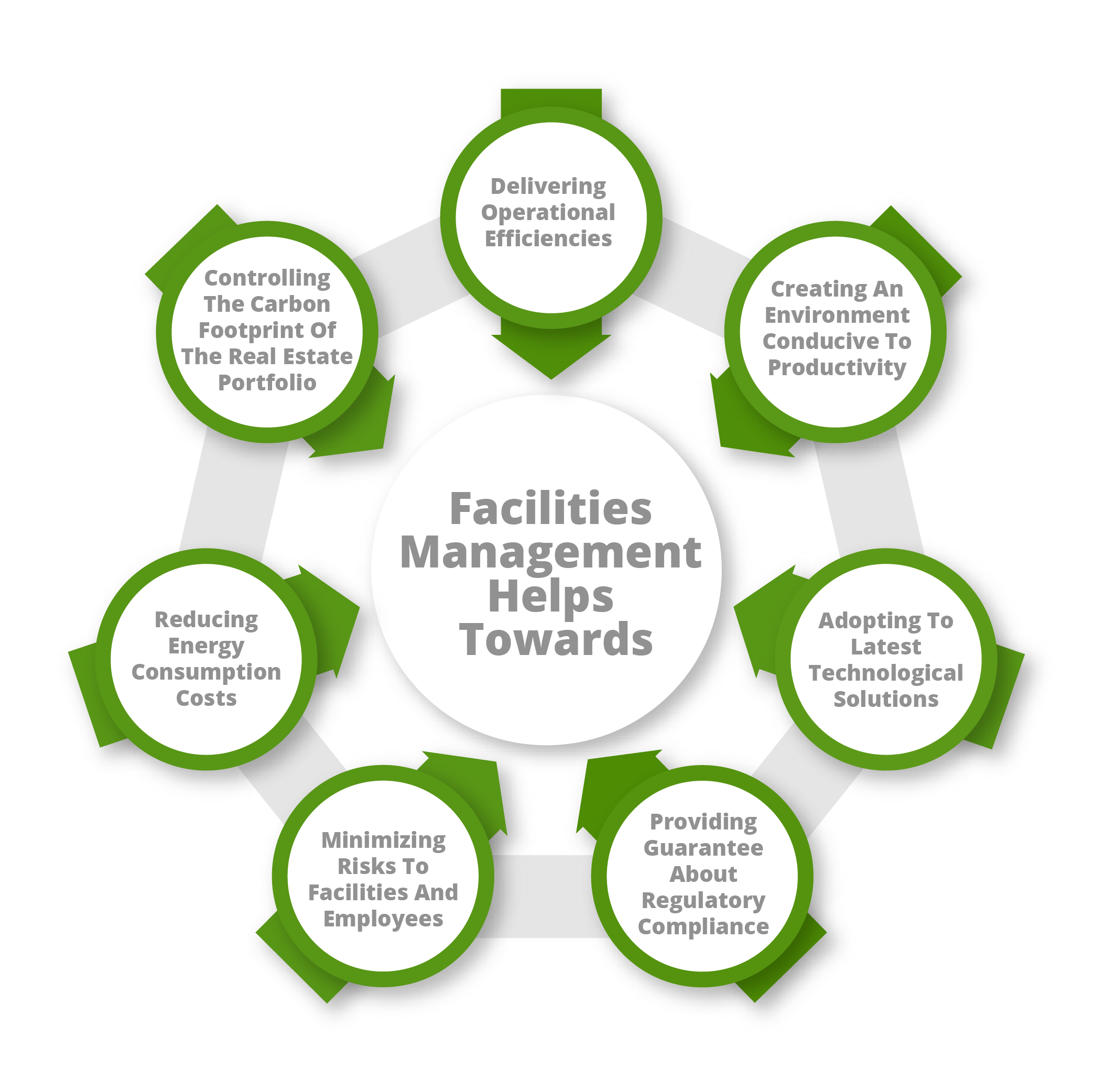Why Total Facility Management Is Crucial for Today’s Enterprises
Why Total Facility Management Is Crucial for Today’s Enterprises
Blog Article
Why Total Facility Management Is Crucial for Service Success
Total Facility Management (TFM) offers as a cornerstone for company success by integrating varied functional aspects such as maintenance, area use, and safety and security measures. As businesses browse an affordable landscape, recognizing the complex advantages of TFM can be pivotal in driving cost efficiency and enhancing employee efficiency.
Comprehending Total Facility Management
Total Facility Management (TFM) incorporates a comprehensive approach to managing an organization's buildings and associated solutions to make certain optimum capability, safety and security, and performance. TFM incorporates numerous self-controls, consisting of maintenance, operations, space management, and safety and security methods, to produce a cohesive framework that supports a company's core purposes.
At its core, TFM intends to enhance the processes associated with facility management, improving and reducing redundancies solution distribution. This technique includes the coordination of tasks connected to building management, such as repair work, cleaning, and power management, to foster an effective atmosphere for workers and stakeholders alike. TFM additionally highlights the importance of applying finest practices and cutting-edge innovations to improve solution high quality and reduce functional costs.
By aligning facility management tasks with business objectives, TFM enhances total performance while making sure conformity with health, safety and security, and ecological policies. Therefore, TFM offers not only as a logistical function however additionally as a strategic possession, adding to a company's long-term sustainability and growth.
Secret Advantages of TFM
Leveraging a thorough approach, organizations that carry out Total Facility Management (TFM) unlock a myriad of advantages that add to overall company success. One of the main benefits of TFM is the improvement of functional performance. By settling facility solutions under a unified management framework, companies can streamline processes, reduce redundancies, and improve communication across departments.
Furthermore, TFM promotes a proactive maintenance technique, which reduces downtime and prolongs the life expectancy of facilitiess and equipment (Total Facility Management). This proactive method not only enhances productivity yet additionally cultivates a more secure working setting, eventually causing higher worker fulfillment and retention rates
Additionally, TFM facilitates better source allowance by supplying insights into facility efficiency metrics. Organizations can determine areas for renovation, permitting them to make educated decisions that align with their critical objectives.
TFM and Cost Efficiency
Attaining expense efficiency is a fundamental objective for organizations, and Total Facility Management (TFM) plays a crucial function in this endeavor - Total Facility Management. By incorporating different facility solutions under a single management structure, TFM makes it possible for companies to improve procedures and minimize redundancies. This holistic strategy causes significant price savings, as it removes the requirement for numerous vendors and streamlines procurement procedures
Additionally, TFM fosters positive maintenance methods, which minimize the threat of costly repair services and downtime. By prioritizing safety nets, companies can extend the life expectancy of their properties and decrease unanticipated expenditures. Furthermore, TFM incorporates energy management practices, which can substantially cut energy prices with reliable source usage.
The centralization of information and analytics within TFM allows organizations to anchor make educated economic decisions. By determining fads and locations for improvement, TFM allows customized strategies that even more boost price management. The scalability of TFM solutions makes sure that as organizations expand, their facility management methods stay effective and straightened with economic objectives.
Enhancing Employee Productivity
A well-managed facility can considerably improve staff member performance by developing a helpful job environment. Effective Total Facility Management (TFM) makes certain that all facets of the office-- from lights and temperature level to sanitation and safety and security-- are maximized. When staff members run in a room that is properly maintained and comfy, they are a lot more likely to focus on their tasks, resulting in greater result and work contentment.
In addition, TFM can improve partnership through the tactical design of communal locations, motivating team effort and development. By buying the right sources and innovation, organizations can facilitate smooth communication and improve workflows, better improving productivity. Regular upkeep and prompt responses to facility issues prevent disturbances that might otherwise impede performance.
In addition, a risk-free and healthy work setting, supported by TFM techniques, decreases absenteeism and advertises well-being, straight correlating with raised efficiency degrees. Eventually, focusing on facility management is an investment you could try here not just in physical assets yet also in the labor force itself. By fostering a setting that supports staff member needs and choices, businesses can grow a more engaged and reliable workforce, driving general success and affordable advantage.
Future Trends in TFM
Welcoming technical advancements is readied to reshape the landscape of Total Facility Management (TFM) in the coming years. As the demand for efficiency and sustainability increases, TFM will increasingly embrace wise building innovations, integrating Web of Things (IoT) gadgets to handle and keep an eye on facility operations in real-time. This shift will enable proactive maintenance, significantly reducing operational prices and boosting service delivery.

Sustainability remains an essential focus, with TFM experts anticipated to prioritize green practices. This consists of making use of renewable energy resources and optimizing waste management systems to lower the carbon impact of facilitiess.
Remote management capacities will likewise be expanded, permitting facility managers to manage operations from practically anywhere. This flexibility will end up being important as companies adapt to crossbreed work designs. In summary, the future of TFM is positioned for transformation with innovation, sustainability, and improved functional methods, making certain organizations remain affordable in an evolving landscape.
Conclusion
By integrating various functional functions, TFM boosts effectiveness and aligns facility management with organizational objectives. As services increasingly take on lasting practices and ingenious technologies, the value of TFM will proceed to expand, making sure lasting operational performance and competitiveness in an advancing marketplace.

Report this page